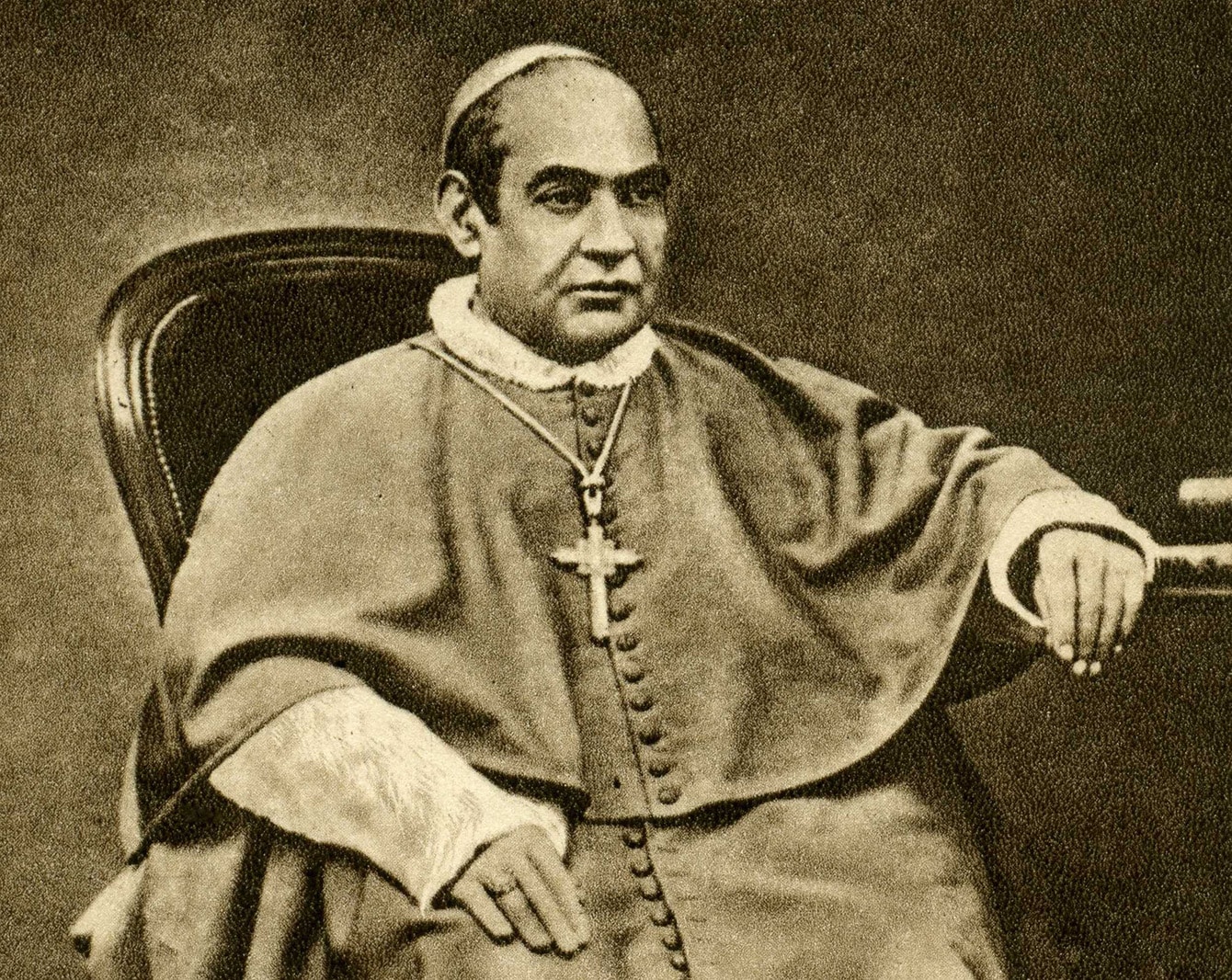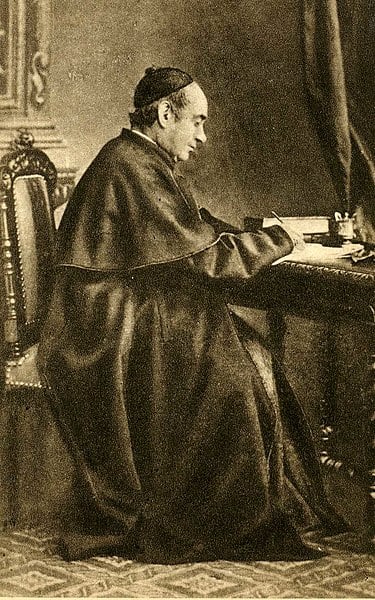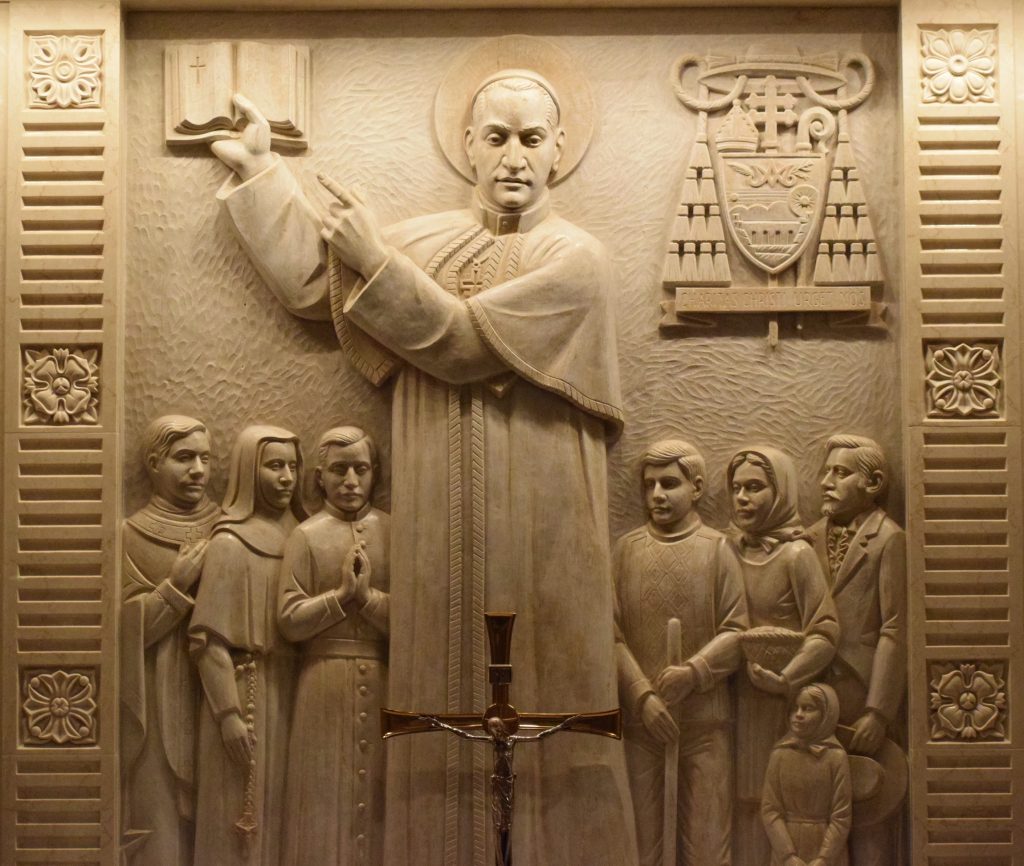He wrote 144 books and had 15 attempts on his life.
Anthony was born in Sallent, Spain, on December 23, 1807, as the 5th of 11 children for Juan, who was a wool manufacturer and Josefa Claret.
He received an elementary education, and at the age of 12, became a weaver.
At 18 he traveled to Barcelona to specialize in his trade and in his spare time studied to become proficient in Latin, French, and engraving.
He was worried about becoming burned out and therefore recognized a call to religious life. He left to become a Carthusian monk and entered the diocesan seminary at Vic, Spain, and was ordained a priest at the age of 27. He was assigned to his native parish and continued his study of Theology.
Missionary work appealed to him and so after several years, he proceeded to Rome where he entered the Jesuit novitiate but had to leave due to poor health and returned to pastoral ministry.
He was sent as an Apostolic Missionary throughout Catalonia which had suffered from French invasions. He drew people from miles around with his speaking talent.
In 1848, his life was threatened by anti-clerical enemies, and he was sent to the Canary Islands. His missions were very well attended.
Upon his return to Spain, he established the Congregation of the Missionary Sons of the Immaculate Heart of Mary, referred to as The Claretians, and founded the great religious library at Barcelona.
When he was 41, Pope Pius IX, at the request of the Spanish crown, appointed him Archbishop of Santiago de Cuba where he reorganized the seminary, strengthened discipline, and validated 9,000 marriages within 2 years of his arrival. He erected a hospital and numerous schools, including for those who were disadvantaged.
In 1855, he founded the Religious of Mary Immaculate, the 1st women religious institute in Cuba.
He wrote books about rural spirituality and agricultural methods, of which he had tested first. He visited jails and hospitals, defended the oppressed, and denounced racism. His work stirred up opposition, and at Holguin, he was stabbed by a freemason assassin. He had the assailant’s charges dropped from a death sentence to a term in prison.
Many miracles flowed through him, and he experienced apparitions of both Jesus and Mary.
He was recalled to Spain by Queen Isabella II, who made him her confessor.
Twice he stated that Jesus foretold of 3 great evils that were to descend upon mankind; the 1st a series of enormous horrifying wars, the 2nd, four powerful demons of pleasure, love of money, false reasoning, and will separate from God, and the 3rd, a chastisement brought about by Communism.
He resigned his Cuban see to solely help the poor and propagate learning. He lived frugally and as a rector of a monastic school, he established laboratories, museums, libraries, and college and schools of music and languages.
The queen was dethroned, and his life was in danger, and he accompanied her to Paris where he preached, later journeying on to Pope Pius IX in Rome.
He began to fail in health, retired to an abbey in Southern France, and died on October 24, 1870, at the age of 62.
He is the patron saint of textile merchants, weavers, savings, Catholic press, technical and vocational educators, Claretians Missionary Sons of the Immaculate Heart of Mary, and the Diocese of the Canary Islands.
His feast day is October 24.
For God’s Glory.




